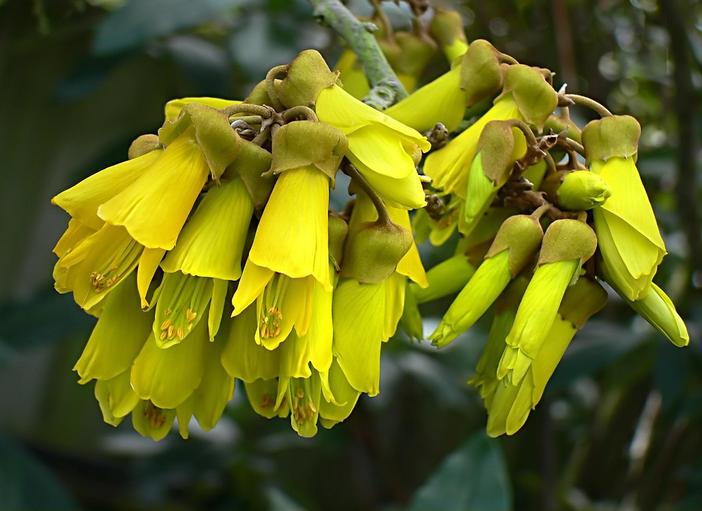Kowhai
(Sophora microphylla)
Kowhai (Sophora microphylla)
/
/

Bernard Spragg. NZ
CC0 1.0
Image By:
Bernard Spragg. NZ
Recorded By:
Copyright:
CC0 1.0
Copyright Notice:
Photo by: Bernard Spragg. NZ | License Type: CC0 1.0 | License URL: https://creativecommons.org/publicdomain/zero/1.0/ | Uploader: Bernard Spragg | Publisher: Flickr













































































Estimated Native Range
Summary
Sophora microphylla, commonly known as Kowhai, is an evergreen tree or large shrub native to riverbanks, forest margins, and open areas within the forests of New Zealand. It typically grows to 8 m (26 ft) tall and broad, with a graceful, spreading form. The Kowhai is renowned for its stunning display of bright yellow, pea-like flowers that bloom in early spring, attracting various bird species, particularly the native Tui and Bellbird. The flowers are highly ornamental and considered one of the hallmarks of the New Zealand spring landscape. As a young plant, S. microphylla exhibits a divaricating growth habit with many interlacing branches, which becomes less pronounced with age.
Kowhai trees are valued for their ease of maintenance, drought tolerance once established, and their ability to thrive in a range of soil types, provided they are well-drained. They are often used in urban planting, as specimen trees, and for revegetation projects. While the nectar is toxic to the honeybee, it is an important food source for native birds. Gardeners should be aware that all parts of the plant are toxic to humans and animals if ingested. Kowhai does best in full sun but can tolerate part shade. It is generally pest-resistant but can be affected by the Kowhai moth, whose larvae can defoliate the tree.CC BY-SA 4.0
Kowhai trees are valued for their ease of maintenance, drought tolerance once established, and their ability to thrive in a range of soil types, provided they are well-drained. They are often used in urban planting, as specimen trees, and for revegetation projects. While the nectar is toxic to the honeybee, it is an important food source for native birds. Gardeners should be aware that all parts of the plant are toxic to humans and animals if ingested. Kowhai does best in full sun but can tolerate part shade. It is generally pest-resistant but can be affected by the Kowhai moth, whose larvae can defoliate the tree.CC BY-SA 4.0
Plant Description
- Plant Type: Tree
- Height: 7-25 feet
- Width: 5-20 feet
- Growth Rate: Slow
- Flower Color: Yellow
- Flowering Season: Spring
- Leaf Retention: Evergreen
Growth Requirements
- Sun: Full Sun
- Water: Medium
- Drainage: Fast
Common Uses
Bee Garden, Bird Garden, Butterfly Garden, Fragrant, Hummingbird Garden, Low Maintenance, Salt Tolerant, Showy Flowers, Street Planting
Natural Habitat
Native to riverbanks, forest margins, and open areas within the forests of New Zealand
Other Names
Common Names: Kowhai Tree
Scientific Names: , Sophora microphylla, Sophora tetraptera, Sophora tetraptera var. microphylla, Edwardsia microphylla, Edwardsia grandiflora var. microphylla,
GBIF Accepted Name: Sophora microphylla Aiton